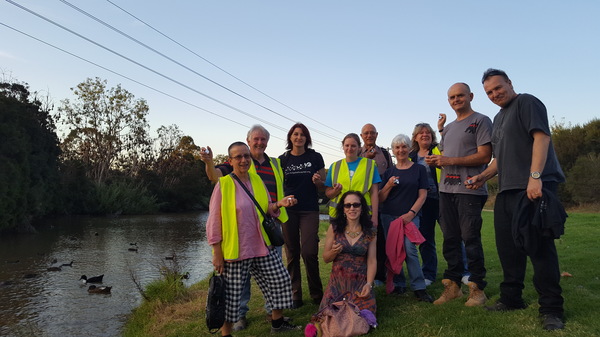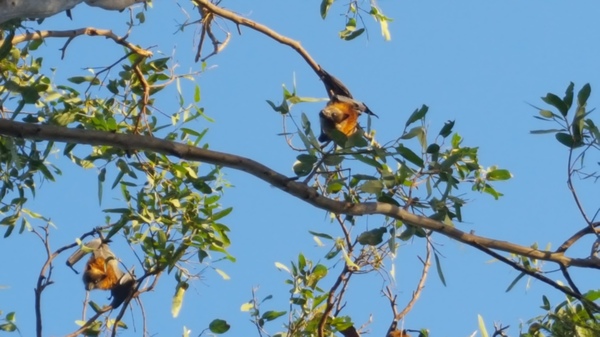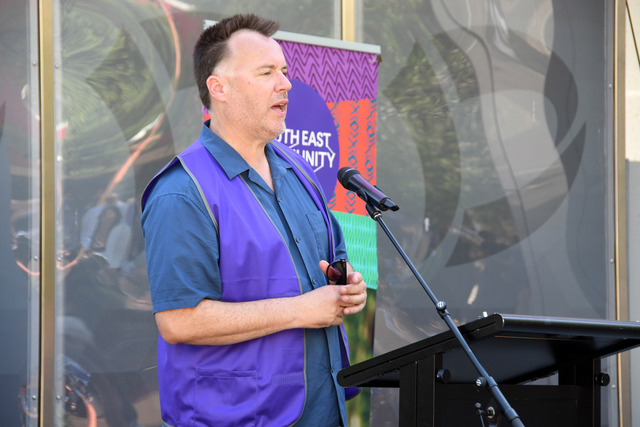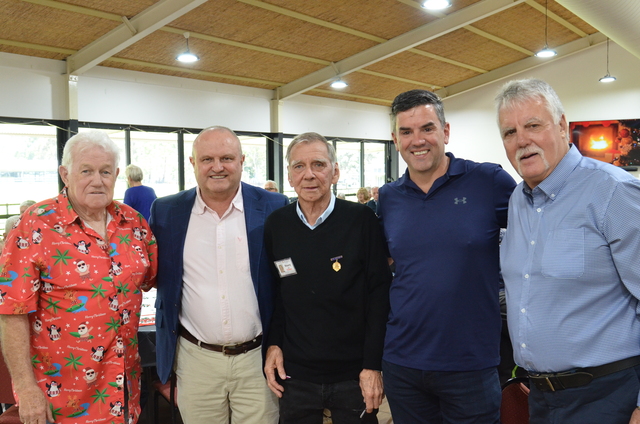By Cam Lucadou-Wells
Don’t be deceived by the near-record numbers of grey-headed flying fox bats roosting upside down beside Dandenong Creek, Doveton.
This is a species in population “free-fall”, according to its devout advocates.
The colony’s large numbers – hitting an estimated 35,000 in February – are a result of being driven south by climate change, lack of habitat and dwindling food supply, says Victorian Advocates for Animals spokesman Lawrence Pope.
The national population is about 300,000 – just one per cent of the estimated numbers a century ago.
During summer, whole camps of bats in New South Wales died due to heat stress, Mr Pope said.
At the same time, gumtrees have been failing to flower – depriving the bats of their desired nectar.
Mr Pope is campaigning for regulation of netting on backyard fruit-trees, which kill more than 500 flying foxes a year in Melbourne.
Wildlife-friendly nets or fruit bags were safe alternatives that guaranteed a fruit yield as well as preserving bats’ safety, Mr Pope said.
“It’s unsafe netting if you can poke your fingers through the gaps,” is Mr Pope’s rule of thumb.
“What would be even better would be to take the nets off the trees and give the animals something to eat.”
The bats rest during the day after covering up to 80 kilometres during the night.
On their travels, they fossick on native flowering gumtrees and other fruits across greater Melbourne, the Dandenong Ranges and Mornington Peninsula.
Through the year, they deliver vital long-distance cross-pollination between diverse interstate tree species, Mr Pope says.
The genetic inter-mixing increases the health of native forests and speeds the regeneration of logged coupes.
“Hundreds of native trees depend on it, some species solely depend on the pollination activities of the flying fox.”
Each month, a group of committed volunteers, each with clicker counters, count the chattering thousands of Doveton bats as they soar out to their night-time feeding missions.
The data is fed through to government departments to monitor the colony’s size and health.
Organiser Dr Rodney van der Ree, who had helped recolonise fruit bats from Royal Botanic Gardens Melbourne in the early 2000s, said the flying foxes had moved in to Doveton about six years ago.
Their numbers have ranged from up to 40,000 in summer to 5000 in winter – when many migrate to warmer, northern climes.
“They’re some of the smartest animals for their size,” he says.
Their communication skills and innate sense for finding flowering trees was proof of their intelligence.
“How else could up to 100,000 bats descend on a location within a week or two of a flowering event, without being able to talk to each other?”
The densely-treed banks need to be gradually re-vegetated due to the bats stripping bark and leaves from their perches, Dr van der Ree said.
“They will kill these trees eventually if we don’t manage the vegetation and re-planting.”
The volunteers station themselves in different points around the colony. Each click of their counters denotes a cluster of 10 bats taking off beyond the trees.
They come out just before dusk each month, even in the depths of winter, meeting on the Tuesday closest to the risen full moon.
As the site awakens with flapping, squawking bats circling and spreading towards the outskirts of Melbourne, even the most experienced of their helpers can’t help but admire the spectacle.









